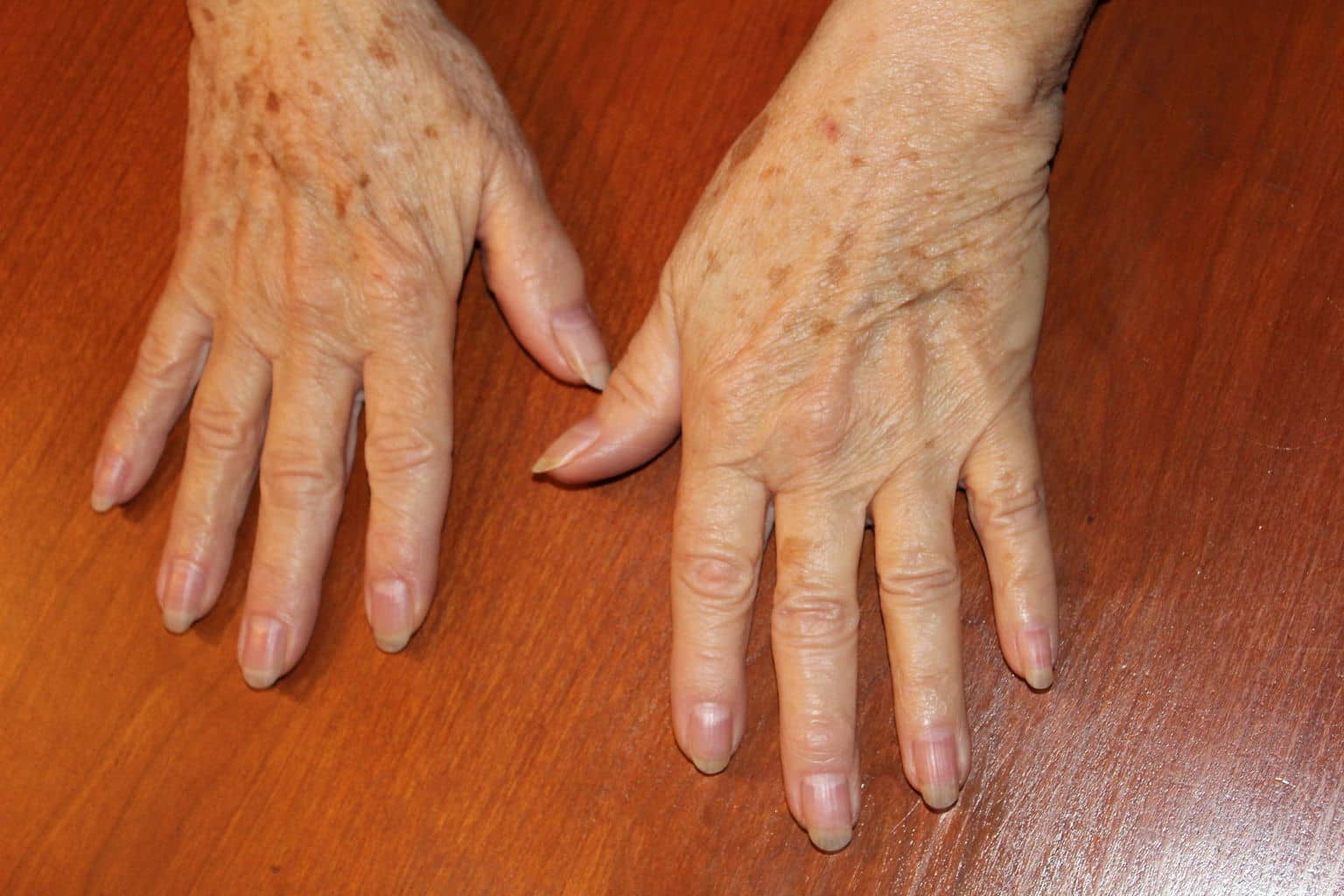
[cmamad id=”4078″ align=”center” tabid=”display-desktop” mobid=”display-desktop” stg=””]
Have you ever wondered what causes age spots?I want you to meet Lipofuscin.
I want you to meet Lipofuscin.
Lipofuscin is a pigment in the body that is the result of wear and tear.
You’ll know it by its other name… black age spots.
Lipofuscin builds up and causes age spots when it’s on the skin.
But what people don’t realize, is that lipofuscin accumulates in the cells inside the body.
It builds up on your organs such as the kidneys, liver, glands, and the heart.
So, you get age spots in your heart!

Basically what study says is that if cells reproduce quickly, they can dilute the lipofuscin.
But in the heart, cells reproduce very slowly.
So lipofuscin accumulation happens in the heart, and as our study shows
it is undegradable and cannot be removed…
Lipofuscin builds up in brain cells too.
Because brain cells reproduce very, very slowly.
Much of aging and dementia is thought to be from lipofuscin type build-up in the brain:

But what causes lipofuscin?
It turns out that there are three major causes.
One cause is a lack of oxygen.
A lack of oxygen reaching the tissues causes lipofuscin production.
[cmamad id=”4079″ align=”center” tabid=”display-desktop” mobid=”display-desktop” stg=””]
Many of us have low oxygen levels reaching our tissues, a condition known as “tissue hypoxia”.
Tissue hypoxia causes all sorts of problems.
The effects of a lack of oxygen to cells range from men’s performance problems, to heart problems, to high blood pressure, to diabetes.
The second major cause of lipofuscin is high iron levels.
Iron is highly toxic to the body and aging often accelerates as iron levels go up in the body.
And the third major cause of lipofuscin is probably the most important one.
Polyunsaturated fatty acids,
PUFAs such as vegetable oils and fish oils are extremely toxic to the body.
Most people just don’t realize how dangerous these oils are.
In this study, researchers fed rats PUFAs.
They found some strikingly important results.

Rats were fed different combinations of oils.
These were lard and corn oil, corn oil only, salmon oil with corn oil, or lard with corn oil.
Note the reason the researchers fed the rats these oils.
These combinations are very similar to the oil combinations that most people consume.
If you eat plenty of fish and polyunsaturated fatty acids in vegetable oil and nuts — this is a diet that will be similar to yours.
Remember that these polyunsaturated fatty acids, especially fish oil, immediately degrade and breakdown in the body.
They turn into highly toxic byproducts.
This is because the body has high levels of oxygen and warm temperatures.
Oxygen and warm temperatures cause these oils to become immediately rancid and nasty in the body.
The nastiest is probably fish oil, because it’s so unstable and breaks down so fast.
This is a warning for people who are consuming fatty fish or taking fish oil.
In this study, large deposits of lipofuscin were found the heart muscle.
But they were ONLY found in the group of rats given fish oil.
The salmon oil group significantly accumulated lipofuscin-like material.
So, now we know the causes of lipofuscin, and the fixes for it.
To summarize, high iron, low oxygen, and especially fish oil and PUFA oils cause lipofuscin.
And we know how to fix these.
First, bring your metabolism up higher, so your cells reproduce more quickly.
And second, strive to eliminate all PUFAs and fish oils from your diet completely.

http://www.ncbi.nlm.nih.gov/pubmed/12208347
Effects of fish oil, corn oil and lard diets on lipid peroxidation status and glutathione peroxidase activities in rat heart
http://link.springer.com/article/10.1007/BF02535232

Leave a Reply